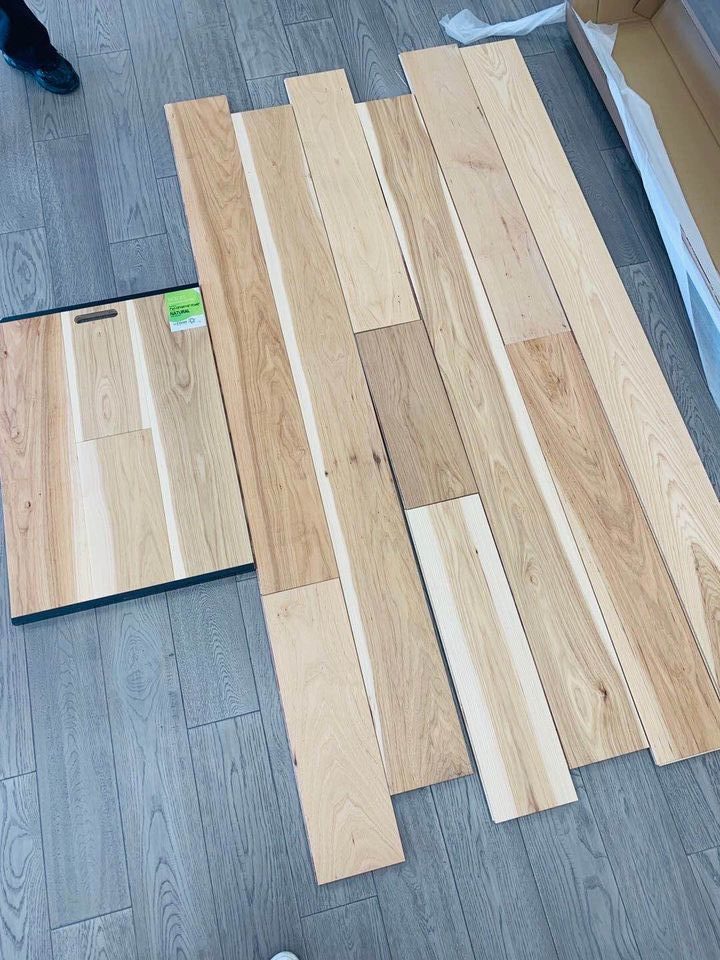As the adage goes, not all things are created equal, as this holds true with building materials. One of the challenges in picking the best material for your project is how to tell a good quality engineered flooring.
It’s understandable to get confused as there are several engineered flooring products in the market, where quality-made engineered flooring looks just the same as the next cheap version.
So, we’ve come up with a few key points to know as you select the best-engineered wood flooring for your project.
But first off, let’s get a few key features of the Engineered Wood Flooring.
Things You Love About Engineered Flooring
- Looks and feels just like solid wood flooring
- On average lasts 20 to 30 years.
- Small scratches can show overtime but can be re-sanded and waxed to look brand new.
- There are scratch-resistant topcoats to apply.
- Just like solid wood flooring, it can be nailed down or glued.
- Provided that a moisture barrier is installed it is a viable flooring for below-ground projects.
Things You Need to Know About Engineered Wood Flooring
- The overall thickness is 5/8” or ¾” thick
- Veneer Thickness is 3/16”
- The thickness of the Core is 9 ply or 11 ply
- Standard width used to come in 5” but you can also find wide planks with 6”, 8”, and 10” widths.
Hot to Spot Good Quality Engineered Wood Flooring
- The Thicker the Better
There are 3 main parts when it comes to engineered flooring. These veneers are glued together that look like a cross-section of a plywood sheet. The top layer is the “wear layer” also termed as “lamella” should be made from high-quality hardwood. The second layer is called the “core layers” which includes several veneers. The third or the last part of your engineered flooring is the “backing” which is a surface that goes between your substrate and the rest of the veneers.
Thick wear layer – The best-engineered floor has a thickness of 3mm or more that serves as the wear layer. The thickness of your engineered flooring will dictate how many times it can be resanded. The best-engineered floors can be resanded as many times as a solid wood floor.
- Good quality has 1-2mm wear layer
- Mid-quality has 2-3mm wear layer
Tip: To add wearability is having five or more coats of extra-tough polyurethane to protect the top veneer.
- Thick ply core – The best-engineered wood floor will have 7-9 plys or more. It is recommended to have ply cores with layers of Baltic Birch because of its durability and stability. You can also spot a good quality engineered floor by having a solid and consistent ply core as a lower quality engineered floor will show voids and are usually made from softwood.
- Good quality has 3 plys
- Mid-quality has 5 plys
- High quality has 7-9 or more plys
- Balanced Composition of Materials
It can be hard to tell the composition of your engineered wood flooring. So, it’s best to check with your supplier and confirm what particular materials are used in their products. If your supplier can’t tell you the composition of your engineered wood flooring, it’s best to look elsewhere.
Wear Layer – It should be made of a hardwood material. A good wood species for your wear layer are cherry and beech. Don’t forget to choose according to the cutting method or veneer variety. The three main types are sliced, cut or peel; rotary cut or peel; and dry solid sawn. The best among the three methods is the dry, solid sawn which is a lengthy process that slowly removes moisture, giving it a more stable material.
Core Layer – Best material so far for your core layers is the Baltic or Russian birch, where both come from the same species and are usually from Europe or Russia. An alternative is a moisture-resistant HDF. Though be careful as you can’t immediately see the difference from the non-moisture resistance.
Backing Layer – It is advisable to have the same hardwood species on your backing layer.
- Hardness Matters
As thickness is important for the top layer or the wear layer, the hardness also matters. A good engineered flooring should be resilient to dents but, also consider the graining, as the less graining, the more it can show dents.
The hardiest wood species according to the Janka Hardness Scale is the Brazilian Ebony. Hickory, on the other hand, belongs to the mid-range while the softest wood is the white pine.
Tongue and Groove Versus Click System
Choosing between T&G and Click system? There are factors to consider when deciding which joint system is best for your engineered flooring install. In general, T&G is a suitable option if you have a subfloor with joists. T&G will require skill and equipment for installation and have wider planks. For the Click System, this cannot be installed on joists but is a good option if you want a DIY project as it requires less skill and equipment. You can also replace the damaged board easier with the Click System. And it’s the only hardwood floor that can be put in condos because the click floor will float on top of the concrete floor they put in the buildings and won’t need any nail-down.

